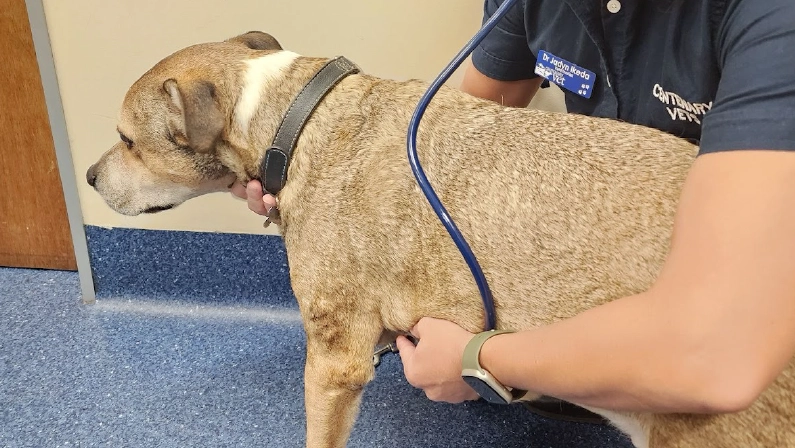Hearing that your pet has diabetes can be a bit scary. But the good news is that with the right care, most pets with diabetes can live long, happy lives.
It just takes some routine, a bit of commitment, and support from a skilled and trusted vet.
In this guide, we’ll walk you through what diabetes means for your pet and how you can manage it confidently.
What Is Diabetes in Pets?
Diabetes happens when your pet’s body can’t make enough insulin or can’t use it properly. Insulin is the hormone that controls blood sugar levels.
Without it, sugar builds up in the bloodstream instead of being used for energy.
It’s a condition we mostly see in older pets, but it can affect pets of any age. The sooner it’s diagnosed and managed, the better your pet will feel.
Signs to Watch For
Some of the early signs of diabetes in pets can be easy to miss. Keep an eye out for:
- Drinking more water than usual
- Needing to pee more often
- Losing weight even though they’re eating well
If it goes untreated, diabetes can cause more serious problems like:
- Vomiting
- Weakness or low energy
- Dehydration
- Cloudy eyes or cataracts (especially in dogs)
If you’re seeing any of these signs, it’s best to get your pet checked out sooner rather than later.
How Diabetes Is Treated
Most pets with diabetes need insulin injections once or twice a day. It might sound like a big step, but most owners find it quickly becomes part of the daily routine. Centenary Vets is here to support you every step of the way.
Giving Insulin
Your vet will show you exactly how and when to give insulin. It’s a small injection under the skin, not as scary as it sounds.
Giving it at the same time each day helps keep your pet’s blood sugar steady.
Diet and Routine
Diet plays a big role, too. Pets with diabetes usually do best on a high-fibre, low-fat diet, and keeping their mealtimes regular is important. Your vet can help you find the right food plan.
Keeping an Eye on Things at Home
Once treatment starts, it’s really important to monitor your pet’s progress. Here’s what you’ll need to keep an eye on at home:
- How much they’re eating and drinking
- Their energy levels and behaviour
- Their weight, sudden changes can be a sign something’s off
- Urine tests checking for sugar in the urine can give you a good idea of how things are going
- Blood glucose levels, your vet might recommend doing a daily check or using a continuous glucose monitor
You might also do something called a glucose curve, where you take readings every few hours over a day. It sounds tricky, but many pet owners manage this at home with guidance from their vet. Centenary Vets can provide the advice and training you need.
Regular Vet Visits Are Key
After diagnosis, your vet will want to see your pet every 1–2 weeks to get their insulin dose just right. Once things have settled, check-ups usually happen every 3–6 months.
These visits might include:
- Glucose monitoring (often using a Freestyle Libre sensor)
- Urine tests
- Blood tests and a chat about how things are going
According to the American Veterinary Medical Association (AVMA), regular check-ins are one of the best ways to avoid complications and keep your pet feeling their best.
When to Call Your Vet
Even with a good routine, things can sometimes change. Get in touch with your vet if your pet:
- Starts drinking or peeing more than usual
- Vomits or has diarrhoea
- Seems tired or not quite themselves
- Loses weight quickly
- Skips meals or doesn’t want to eat
- Has trouble with injections or monitoring
Helping Your Pet Thrive with Diabetes
Diabetes doesn’t have to stop your pet from living a great life. With a solid routine, a bit of home monitoring, and regular vet support, your pet can stay healthy and happy for years to come.
According to Cornell University’s College of Veterinary Medicine, early treatment and careful management can make a huge difference in your pet’s quality of life. If you’ve noticed any signs or just want to learn more, Centenary Vets is the best place to start. The sooner you act, the better the outcome for your furry friend.



